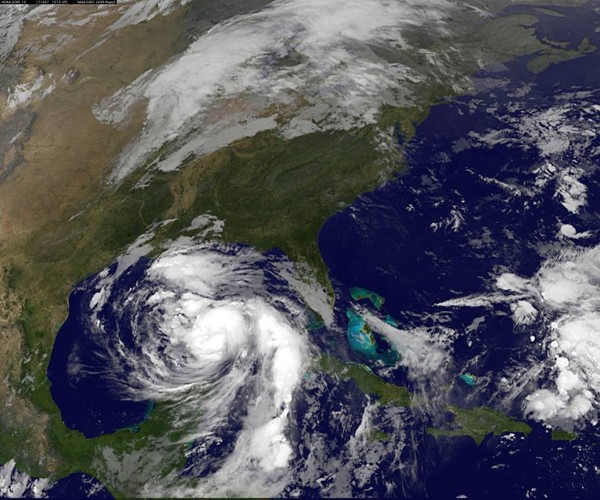Hurricanes Nate and Ophelia Strike

October 18, 2017
An incredible amount of hurricanes have hit all around the world this year, each causing a trail of mass destruction. Even though some of these storms have died out, there are still more building up and making landfall.
After slamming into the Northern Gulf coast last Saturday, Hurricane Nate degraded to a tropical depression as it moves further inland. Nate hit the U.S. Coast near the Mississippi River as a Category One hurricane on the October 7, then moving into Biloxi, Mississippi by the next morning. According to Weather.com, the hurricane swamped a large portion of the Gulf Coast including Southeast Louisiana, Mississippi, Alabama, and the Florida panhandle.
Storm surges as high as 6.3 feet were observed in towns such as Pascagoula, Mississippi. Over ten tornadoes were spawned due to the hurricane’s movement inland, most of them in the Alabama area with a few in Georgia and South Carolina. These tornadoes, as well as the hurricane, whipped up winds as high as 50 miles per hour.
Nate started out as a tropical depression in the norther part of Africa near Nicaragua. According to Weather.com, the hurricane moved further north near the Caribbean Islands as it grew into a tropical storm. Nate continued its path upwards until it reached the Northern Gulf, now moving inland.
Five days after Hurricane Nate began its movement northward, a new Hurricane formed in the Atlantic, this time making landfall in the UK. Hurricane Ophelia clashed into the British Isles with winds as high as 70 miles per hour, tearing down trees and houses and taking out the power of over 250,000 homes. The storm is ranked to be the worst in all of Ireland’s history, killing three people and tearing down power lines, resulting in the loss of power of hundreds of thousands of homes.
As of yesterday, recovery measures were enforced to help regain power to areas with broken power lines as well as helping areas with water shortages. According to Telegraph.co, funding will also be used to help clean up after Ophelia’s destruction.
Within a 45 day period, Hurricane Nate became the fourth hurricane to make landfall in the U.S, others including Hurricane Harvey, Maria, and Irma. Hurricane Ophelia battered the UK and left Ireland still recovering from the storm. Some of these storms have been the worst to occur in decades, leaving trails of mass destruction behind.
After asking some of the Wayne Hills students for their opinions, freshman Jessica Tozzi said that “she felt terrible for the people suffering” from the hurricane’s destruction and hopes that things get better for them in the near future.
Sophomore Maya Kachroo raised concern on the increased amount of hurricanes this year. When asked about whether or not she though climate change played a role in the increased hurricane count, Kachroo responded “gases are being released into the atmosphere by human beings”, which “causes more natural disaster”. Kachroo emphasized that because of the increasing hole in the ozone layer, the likelihood of natural disasters is increased.
Finally, another student, Julianna D’Amico said that she wishes that as a school, WHHS could “do something to prevent [the hurricane damage] and help the people suffering”.
Despite hurricane season drawing to a close, countries around the world are still recovering from all of the devastation.






